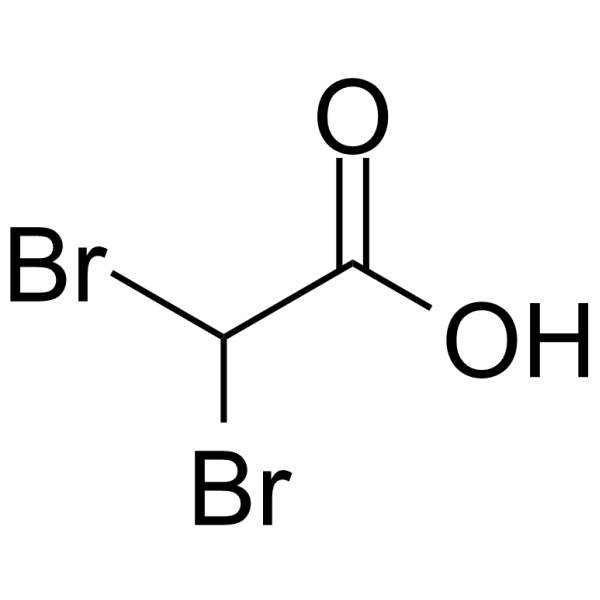Dibromoacetic acid |
| Catalog No.GC64139 |
Products are for research use only. Not for human use. We do not sell to patients.

Cas No.: 631-64-1
Sample solution is provided at 25 µL, 10mM.
Dibromoacetic acid, a haloacetic acid found in drinking water as a disinfection by-product, can cause many adverse effects, including immunotoxicity and apoptosis[1].
Exposure to DBAA (5-40 μM) leads to significant reduction in thymocyte proliferation in vitro[1].DBAA (5-40 μM; for 24 hours) treatment induced cell cycle arrest. The data showed at least 40% increase in the G0/G1 phase and 50% decrease in the S phase in thymocytes treated with different concentrations of DBAA[1].DBAA (5-40 μM; for 24 hours) decreases the expression of Bcl-2 and increases the expression of Fas/FasL[1].
There is some evidence of carcinogenic activity of Dibromoacetic acid in male rats based on an increased incidence of malignant mesothelioma. The increased incidences of mononuclear cell leukemia in male rats may have been related to Dibromoacetic acid exposure[2]. There is some evidence of carcinogenic activity of Dibromoacetic acid in female rats based on an increased incidence and positive trend of mononuclear cell leukemia[2].There is clear evidence of carcinogenic activity of Dibromoacetic acid in male and female mice based on increased incidences of hepatocellular neoplasms and hepatoblastoma (males only). Increased incidences of lung neoplasms in male mice were also considered to be exposure related[2].
[1]. Shu-Ying Gao, et al. Dibromoacetic Acid Induces Thymocyte Apoptosis by Blocking Cell Cycle Progression, Increasing Intracellular Calcium, and the Fas/FasL Pathway in Vitro.Toxicol Pathol. 2016 Jan;44(1):88-97.
[2]. National Toxicology Program. Toxicology and carcinogenesis studies of dibromoacetic acid (Cas No. 631-64-1) in F344/N rats and B6C3F1 mice (drinking water studies). Natl Toxicol Program Tech Rep Ser. 2007 Apr;(537):1-320.
Average Rating: 5 (Based on Reviews and 29 reference(s) in Google Scholar.)
GLPBIO products are for RESEARCH USE ONLY. Please make sure your review or question is research based.
Required fields are marked with *




















